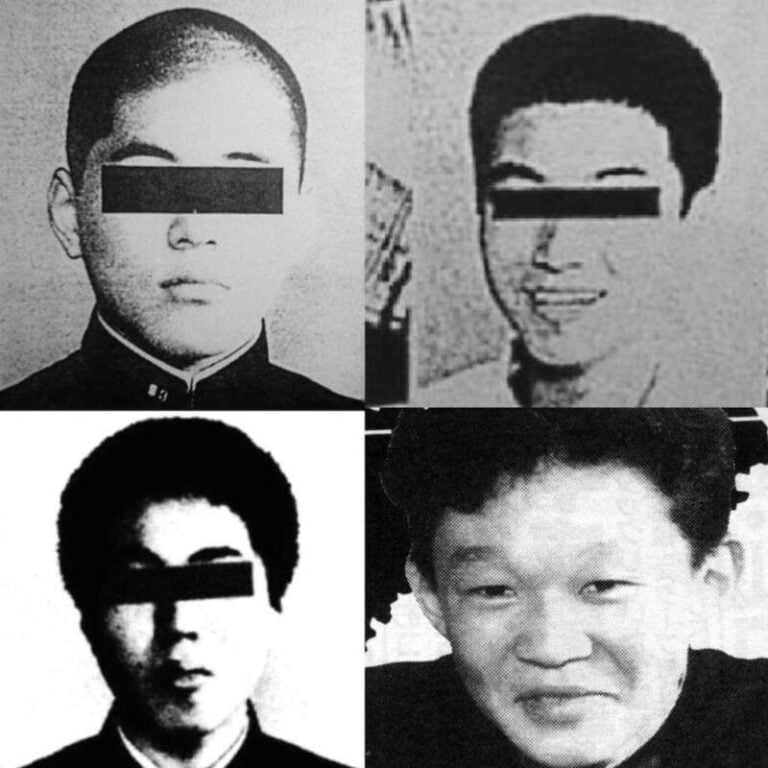Junko Furuta Case: What Happened To Her Killers? [Latest Updates]
What happens when justice fails to deliver, and the perpetrators of unspeakable cruelty walk free? The brutal murder of Junko Furuta in Japan stands as a stark reminder of this reality, a case where the system faltered, and the consequences continue to resonate decades later.
In the late 1980s, a young high school student named Junko Furuta, was kidnapped, held captive, and subjected to unimaginable acts of torture and sexual violence. Her ordeal, which lasted for an agonizing 40 days, was perpetrated by a group of four male teenagers: Hiroshi Miyano, Shinji Minato, Jo Ogura, and Yasushi Watanabe. The heinous nature of the crimes committed against Furuta shocked the world, yet the legal repercussions that followed were far from commensurate with the depravity of the acts. This article delves into the details of this tragic case, examining the individuals involved, the events that transpired, and the lasting impact of a crime that continues to haunt the collective memory.
The story of Junko Furuta is a chilling testament to human cruelty. Born on January 18, 1971, in Misato, Saitama Prefecture, Japan, Junko was a typical teenager with hopes and dreams. But in the latter half of the 1980s, her life was irrevocably altered when she crossed paths with her tormentors. The gang of four teenagers kidnapped her, initiating a nightmare that would culminate in her untimely death. The details of her captivity are harrowing, involving repeated sexual assaults, physical abuse, and psychological torment. The perpetrators' actions were not only brutal but also prolonged, with the victim enduring weeks of relentless suffering. Following Junkos death, the four boys encased her body in concrete inside a large drum, callously disposing of it in a cement truck in a desperate attempt to cover up their heinous actions.
| Individual | Details |
|---|---|
| Hiroshi Miyano | The main perpetrator, released from prison around 2009. He was the ringleader and responsible for many of the acts of violence. |
| Shinji Minato | Released from prison for attempted murder in 2019. He has been active online, posting to the account "denngekiraketto" and has defended himself by name and discussed Junko's case. In 2018, he allegedly assaulted a company employee with a metal baton. |
| Jo Ogura | One of the four perpetrators. Arrested for a separate gang rape charge two weeks after Junko Furuta's body was found. |
| Yasushi Watanabe | One of the four perpetrators. Details of his post-release life are less readily available publicly. |
| Junko Furuta | Born on January 18, 1971. She was a Japanese high school student who was abducted, raped, tortured, and murdered by a gang of 4 teenagers in 1988. |
Reference: Wikipedia
The aftermath of Junko Furuta's murder saw the swift intervention of law enforcement. An unrelated rape case, coupled with a confession, led to the arrest of the four kidnappers. However, the justice system, in this instance, failed to deliver adequate punishment for the gravity of the crime. Because the perpetrators were minors at the time of the incident, they received comparatively lenient sentences. While the nature of their offenses warranted a far more severe penalty, the legal constraints of their age limited the severity of their punishment. Most were sentenced to relatively short terms in juvenile prison, a decision that would later become a subject of intense public debate and outrage.
The specifics of the sentences were a further cause for discontent. Three of the four individuals did not serve even a decade behind bars. Only one received a sentence explicitly for murder a term of 20 years in prison. This perceived lack of proportionality between the crime and the punishment fueled the anguish of many. The Furuta case highlighted, in the most devastating way, the complexities and, at times, the inadequacies of the juvenile justice system. It raised questions about how to balance the need for rehabilitation with the imperative of retribution when dealing with heinous crimes committed by young offenders.
The release of the perpetrators from prison marked another chapter in this tragic saga. Hiroshi Miyano, the central figure in the crime, was released around 2009. Shinji Minato was released from prison for attempted murder in 2019 and has since been active on social media. Minato, under the online alias "denngekiraketto," has engaged in online discussions about the case, defending his actions and responding to comments about Junko's murder. This online presence has sparked further outrage and revulsion, with many criticizing his perceived lack of remorse and his attempt to control the narrative surrounding the events. His actions continue to reopen old wounds, reminding the public of the brutality of the crime and the perceived inadequacy of the justice system.
The current whereabouts and activities of the other individuals involved in the abduction and murder of Junko Furuta remain largely unknown to the public. The lack of transparency about their lives and their reintegration into society has added to the sense of unease surrounding the case. The absence of a clear picture of their lives post-release has, understandably, fueled public speculation and fear, making it difficult for society to fully come to terms with the tragedy. The perpetrators' freedom is a stark contrast to the life that was brutally stolen from Junko Furuta.
The murder of Junko Furuta is considered one of the most heinous crimes in Japanese history, a horrific episode that has left an indelible mark on the national consciousness. The case continues to be a subject of intense public interest, with ongoing discussions about the inadequacies of the justice system and the need for victims' rights. The details of the crime are so disturbing and horrific that the case has been studied by criminologists and psychologists as a case study in the extremes of human behavior.
In 2018, the actions of Minato, as mentioned earlier, added a new dimension to the story. The assault of a company employee, using a metal baton, brought his name back into the headlines and highlighted the potential for ongoing violent behavior. This incident served as a painful reminder of the violence that had characterized his past, and raised concerns about his rehabilitation and his ability to reintegrate peacefully into society. It further intensified the debate over the severity of his original sentence and the extent to which the justice system had adequately addressed his capacity for violence.
The case of Junko Furuta underscores the profound impact of crime on both victims and society as a whole. The failure to deliver adequate justice has left a legacy of pain, anger, and a lingering sense of injustice. The story raises critical questions about how we as a society deal with extreme violence, the role of the juvenile justice system, and the balance between punishment and rehabilitation. The case remains a stark reminder of the enduring consequences of the failure of the legal system to properly address the gravity of the crimes committed, leaving a lasting stain on the narrative of justice and human rights.
The absence of sufficient justice in the Furuta case is a tragic reality. The perceived lenient sentences for the perpetrators have left many with the feeling that the punishment did not fit the crime. This perceived lack of justice is a persistent theme in discussions about the case. The fact that the perpetrators, after a period of incarceration, were able to return to their lives, contrasts sharply with the permanent loss suffered by Junko Furuta and her family. The inadequacy of the sentences and the perceived failure of the system to deliver true justice will continue to be a source of pain and frustration for those affected.
The persistent online presence of Shinji Minato, and the allegations of his involvement in further violent acts, have amplified the emotional impact of the case. This has re-triggered trauma for many and reopened discussions surrounding the morality of punishment, rehabilitation, and the possibility of redemption. His actions have caused an unwelcome spotlight on the case and kept the memory of the brutal crime alive, while the fact remains that Junko Furuta was never granted the justice she deserved.
The case of Junko Furuta offers a complex and heartbreaking commentary on the importance of justice. It highlights the need for the justice system to provide meaningful consequences for heinous acts, and the importance of recognizing and supporting the victims and families affected by such tragedies. It is a powerful reminder of the lasting impact of crime and the need for society to ensure that such atrocities are never forgotten.
In closing, the memory of Junko Furuta and the circumstances surrounding her death will likely continue to shock and disturb for years to come. Her story acts as a potent reminder of the depths of human cruelty and the critical importance of justice, accountability, and the unwavering commitment to upholding the rights of all victims of crime. The Furuta case stands as a grim reminder of the importance of the justice system in safeguarding human lives and the enduring need to provide healing and support to those who suffer at the hands of unspeakable violence. The case will continue to be a subject of great interest and scrutiny in the years to come, because the injustice continues to resonate deeply in the hearts of many.


